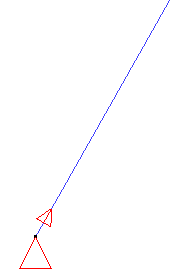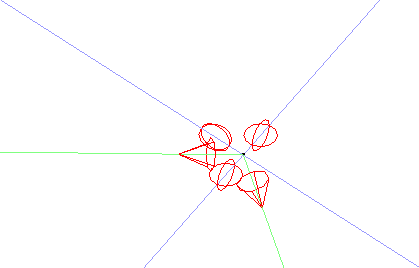“A hinge” is a global name for a boundary condition which prevents certain internal forces to be transferred among elements themselves.
- If the transfer is between two (or more) bar elements, we use the name “hinge” or “joint”.
Defined in Diamond using the button .
. - If the transfer is between two (or more) surface element, we often use the name “hinge line”.
Defined in Diamond using the button .
.
However, adding to many hinges will result in an arithmetic mechanism. Thus a structure that will not calculate or result in exaggerated deformations. We list the most common mistakes here together with their correct alternative.
| BAD | GOOD | Why? |
|---|---|---|
| |
A simple support cannot bear moments. By adding an internal hinge, you say that the column cannot transfer bending moment to the support. That’s saying the same thing twice. Remove the internal hinge. | |
| A built-in support can bear moments. By adding an internal hinge, you say that the column cannot transfer bending moment to the support. That’s saying the opposite thing. Remove the internal hinge and use a simple support. | ||
 |
 |
A simple support cannot bear moments. A tie rod is a hinged bar by definition (otherwise it cannot function as a tie rod). If you anchor a tie rod to the foundation, without any other bars meeting in that node, you should define the support as built-in. Because the simple support + hinged tie rod, is an arithmetic mechanism. |
 |
 |
N bars meet in a node (N=4 in this example). Neglect the tie rods, because internally in Diamonds, they will automatically be defined as hinged. You want the node to work as hinged (EN: truss, NL: vakwerk), then you should apply a hinge to 3 bars, not all 4. If you apply a hinge to all 4 bars, you create an arithmetic mechanism. If bars 1 to 3 contain a hinge, the bending moment in bar 4 (which doesn’t contain a hinge) can’t go anywhere because every bar around it is hinged. |

